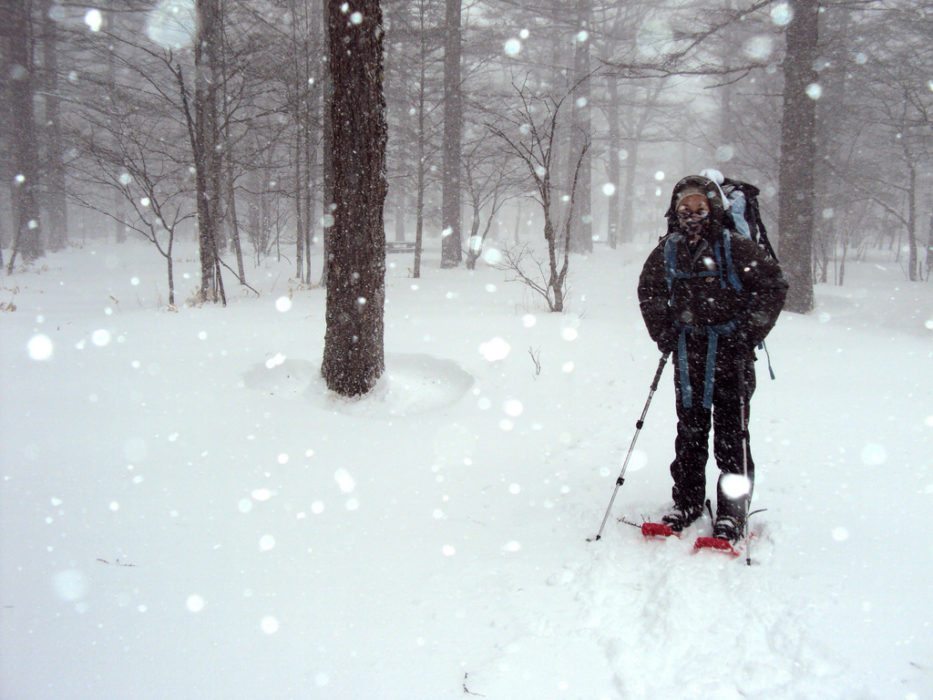Hiking in the winter backcountry, there are a lot of things you have to face. When the odds aren’t in your favor this time of year, you have to try to manage your surroundings as best as you can. Here are some tips on conquering the elements outdoors this season.

Water
When you’re out exploring the backcountry, it’s so important to stay hydrated. While you may not feel the need to drink water as much as you would in summer time, your body is doing more to keep up with the cold. And, although it may seem easier to stay hydrated in the wintertime as opposed to the brutal heat of summer, that’s not entirely the case. After all, where you can you get your water from when everything in sight is frozen or nearly frozen?
Well, there are ways. First of all, make sure to hydrate yourself more than usual in the days leading up to your hike or backpacking trip. Additionally, pack more water or electrolyte fluids to last you a while. If you start to run out of water, find a source. Since part of it may be frozen, be careful when approaching that source. Tie your container to a pole and stretch out your arm to eliminate the risk of falling in. You can also use melting snow. Just remember, like any water you get, it needs to be purified.
To purify the water, you can either boil the snow and use a few drops of water purifier to sterilize it. Always boil your water first to get rid of dangerous bacteria. Then, you should use a UV light purification tool, like the STERIpen, to make your water drinkable. Or, you opt for chemical purifiers from Aquamira to purify your water, which are actually meant for winter hiking.

Air
The air outside in this season is at a whole new level than what we’re used to. The cold air can cause a lot of problems or discomfort for a hiker, to say the least. For one thing, it can be difficult to breathe, especially if you’re hiking up higher altitudes. Cold air can also cause frostbite and hypothermia. Knowing the signs of these conditions and how to treat them can help.
Another reason the cold air complicates things is because condensation will form in your tent. This can make everything in your tent become wet in the morning. To solve this problem, vent your tent a bit while you sleep, or make sure there’s enough time to dry out your things before you head out further into the backcountry.

Fire
Fire mixed with cold and snow doesn’t really go together too well. But, if the cavemen could do it (and believe us, they could), then so can you. Building a fire on top of snow is no easy task, but it can be done. And, it’s gotta get done, because, without a fire in the winter backcountry, you’re putting yourself at a huge risk.
If snow is packed, make a flat surface using your feet and hands to smooth it out. Then, you’re going to need a platform to raise the fire above the snow. Using logs or rocks, build a little stand, and lay a flat, large stone in the center. Set up a windscreen around the area. Using the teepee method, arrange your sticks and tinder above the stone, on top of the platform. Have flammables on deck, like lint or cotton soaked in petroleum jelly, to get your fire going quickly. Then, using a reliable firestarter, start lighting your fire. It may take a while for it to kindle, but it’ll get done.
Earth
When we talk about Earth as an element, it can encompass a lot of things. In this case, we’re talking about the literal ground beneath your feet and how to use the resources around you to keep yourself safe and warm.
In the winter backcountry, there are a lot of safety risks, one of the biggest ones being an avalanche. However, if you know the signs of an avalanche, then you should be okay. You can also check the forecast before you head out, and use an avalanche transceiver to gauge your trail. In case of the worst, bring a personal locator beacon and a snow shovel to help save your life.
If your concerns include conquering the climate, the Earth itself has a lot to offer hikers. Using the snow, you can create an igloo or a snow trench for yourself. But, you’ll need a snow shovel, a snow saw, and some help to do so. These are to be used in case of an emergency, to keep you sheltered and safe until help arrives.
The elements are strong this time of year. But, they can also help you make your experience outdoors easier. Know how to utilize what’s around you to conquer the elements of the winter backcountry, and you’ll be good to go!








